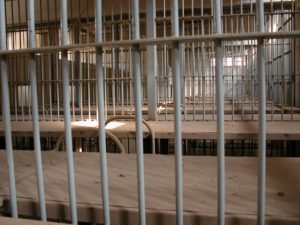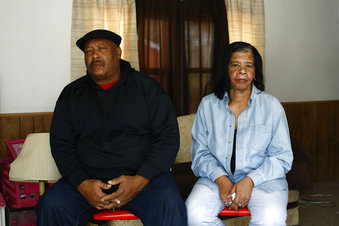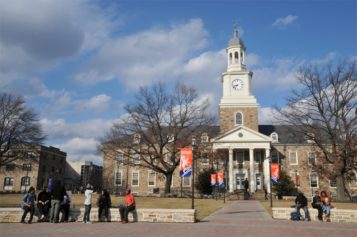
According to ThinkProgress, the jail was plagued with rampant corruption, crumbling facilities, mold, flooding and gang violence.
Baltimore Deputy District Public Defender Natalie Finegar told ThinkProgress structural problems at the jail forced her and her colleagues to close their office. She described the jail as “disgusting” and hazardous to inmates’ health.
“The general dirtiness of the building has been a concern for us when dealing with clients that might have some immunity issues or might have like an open wound or something like that,” she said.
Hogan said the jail was a black hole for taxpayers’ money.
“The practice of continuously dumping hard-earned taxpayer money into this disastrous facility will not continue under my watch,” said Hogan in a press conference.
The Civil War-era building was a never-ending source of problems for state and city officials, who were always coming up with plans to remodel or repair the facility.
“The jail was in constant need of repairs, and corrections officials have long pushed for a better facility. As far back as 1938, city officials were calling for the building to be demolished and a new one erected. Designs for a new, 27-acre downtown jail campus were drawn up a decade ago,” reported The Baltimore Sun. “Following the federal indictments in 2013, a special state legislative commission endorsed a $500 million plan proposed by former Gov. Martin O’Malley to knock down the jail and rebuild it.”
According to The Baltimore Sun, a 2013 state and federal investigation exposed widespread corruption among jail staff and collusion with the prison gang, the Black Guerilla Family. The investigation, which resulted in the convictions of several inmates and correctional officers, revealed the jail was effectively run by a gang. One gang leader was captured on phone saying, “This is my jail.”
The indictment revealed a shocking level of cooperation between jailers and inmates. Several female correctional officers were involved in sexual relationships with gang members.
“Four corrections officers-Jennifer Owens, Katera Stevenson, Chania Brooks and Tiffany Linder, who are also facing charges – allegedly fell pregnant to Tavon White while he was behind bars. Charging documents reveal Owens had ‘Tavon’ tattooed on her neck and Stevenson had ‘Tavon’ tattooed on her wrist,” reported CBS News.
Correctional officers were also found to have smuggled in cell phones, drugs, tobacco and other contraband for gang members. They were rewarded with cash and gifts such as diamond rings and luxury cars.
The investigation led to changes at the jail. New surveillance cameras were installed to crack down on smuggling in contraband and technology was activated to block cell phone service.
The closure of the jail will be a relief to city and state officials who came to see the facility as a black eye. ACLU officials, who filed several lawsuits over the jail, welcomed the closure of the facility.
“We are relieved that Baltimore detainees will no longer be forced to live in the Men’s Detention Center, a building that should have been condemned decades ago,” said David Fathi, director of the ACLU’s National Prison Project. “This critical step, though, will have no impact on the dangerous physical conditions and shockingly deficient medical and mental health care in the jail facilities that will remain open.”


